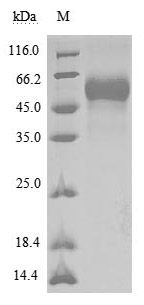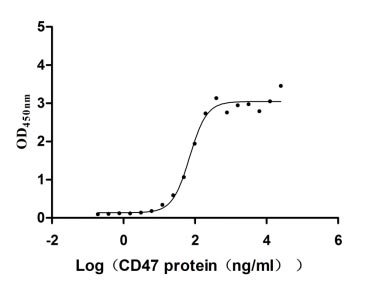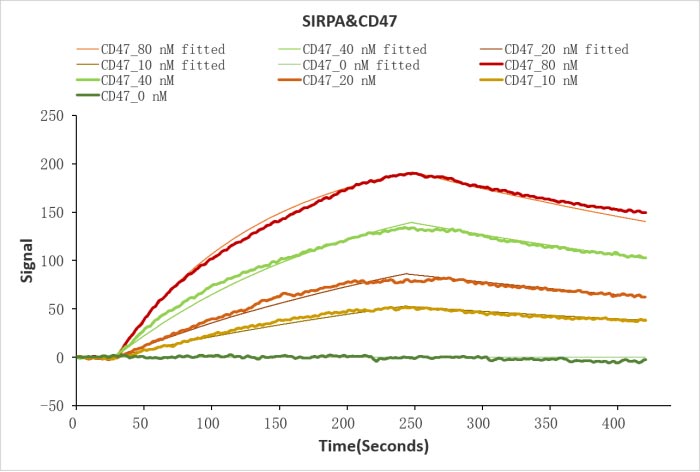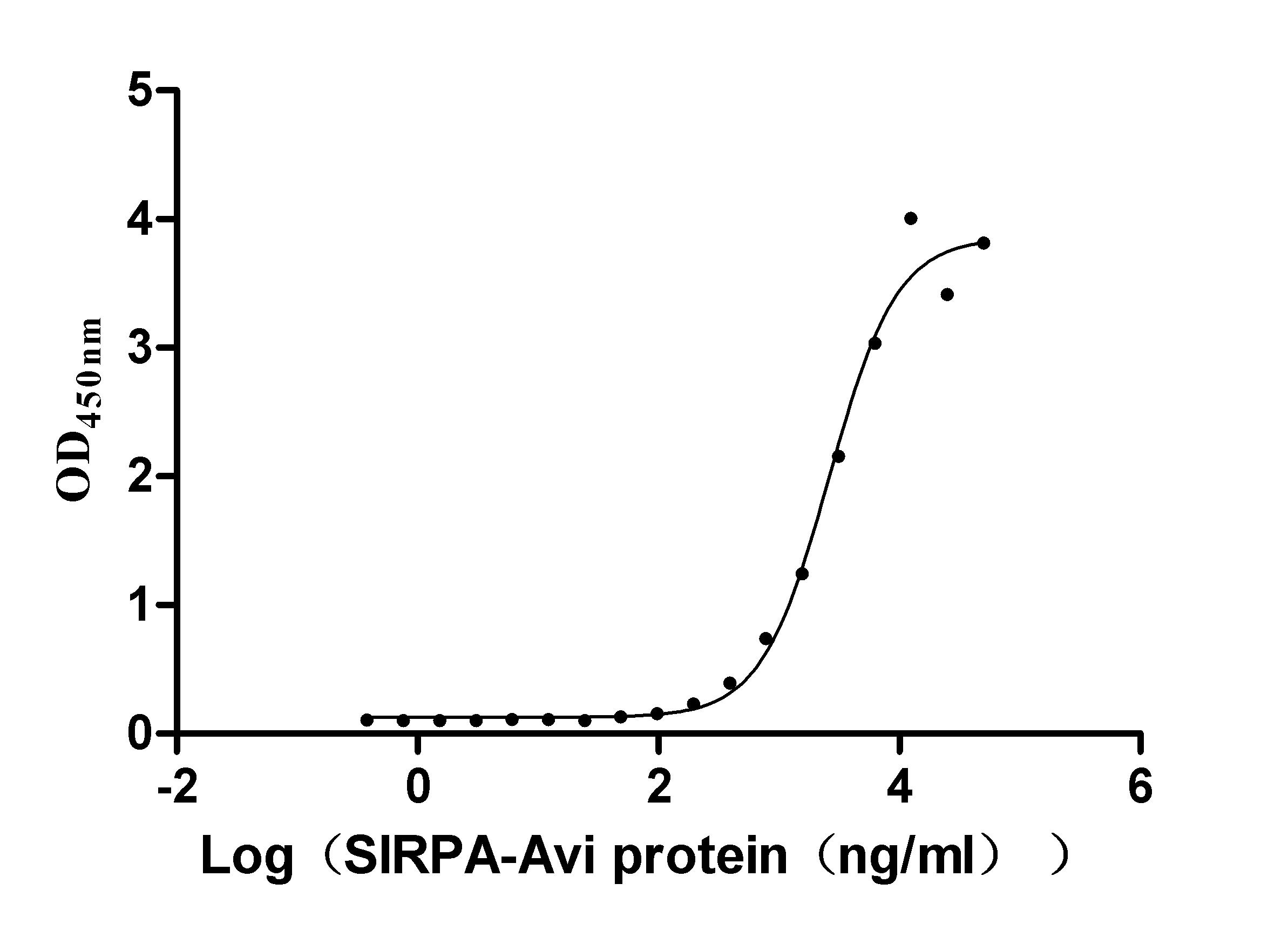The recombinant human tyrosine-protein phosphatase non-receptor type substrate 1 (SIRPA) is an active protein expressed from mammalian cells, with a C-terminal 6xHis-Myc-tag. Its expression region is the DNA fragment encoding the amino acid residues 31-370 of the human SIRPA protein. The purity of this SIRPA protein is greater than 95% measured by SDS-PAGE. This recombinant SIRPA protein migrated to the band with a molecular weight of approximately 50 kDa on the gel. Its endotoxin level is less than 1.0 EU/ug determined by the LAL method. And its bioactivity has been validated in the ELISA and LSPR assay. In the functional ELISA, this SIRPA protein binds to the human CD47, with an EC50 constant of 58.30-85.04 ng/ml. In the LSPR assay, the SIRPA protein captured on the COOH ship binds to the human CD47 protein with an affinity constant of 19.1 nM. It is in stock now.
SIRPA binds to its ligand CD47, initiating a signaling cascade that results in the inhibition of phagocytosis. It also suppresses infection by various viruses that enter via acidic compartments, including Zika, SARS-CoV-2, and Ebola.










